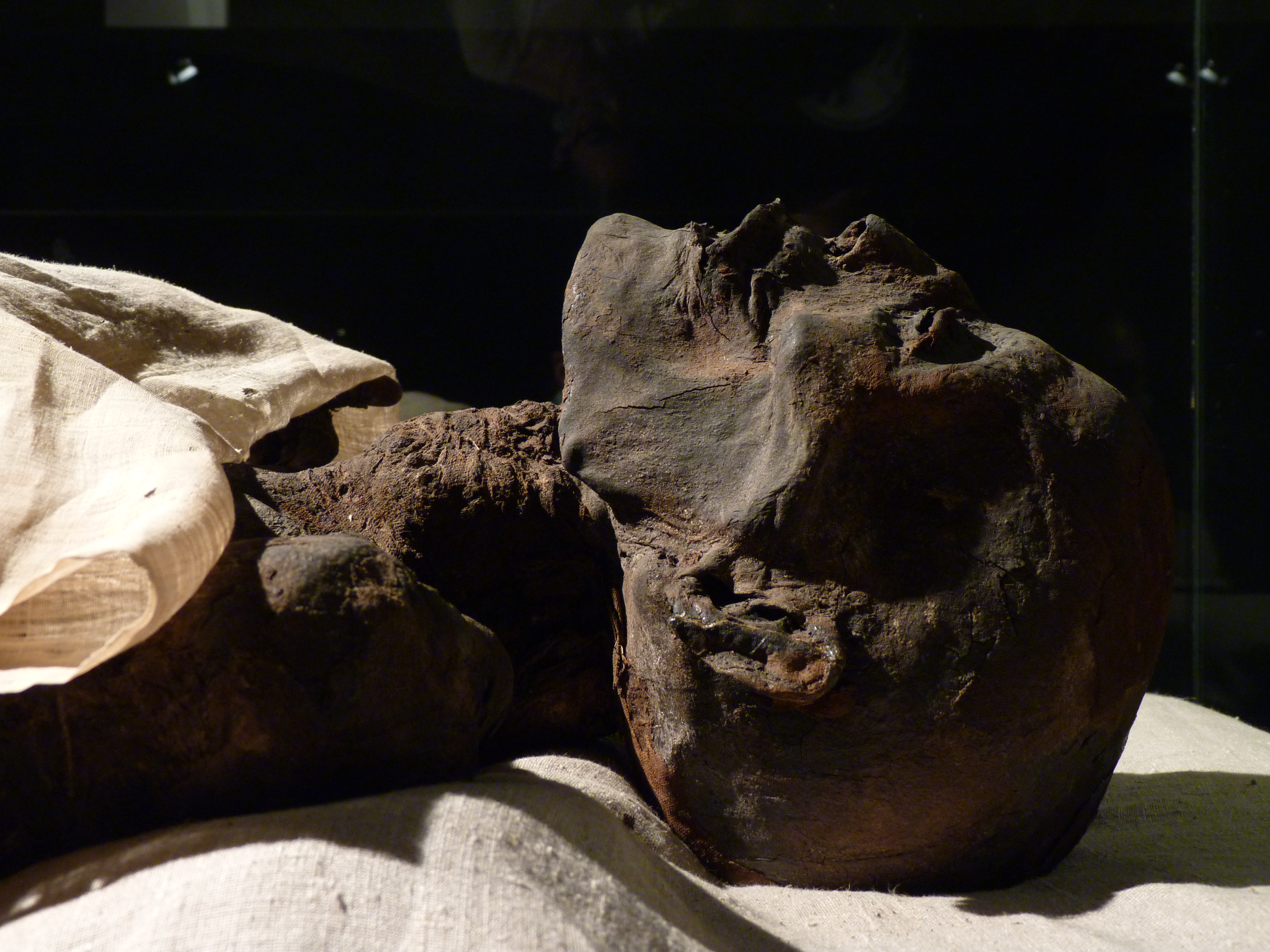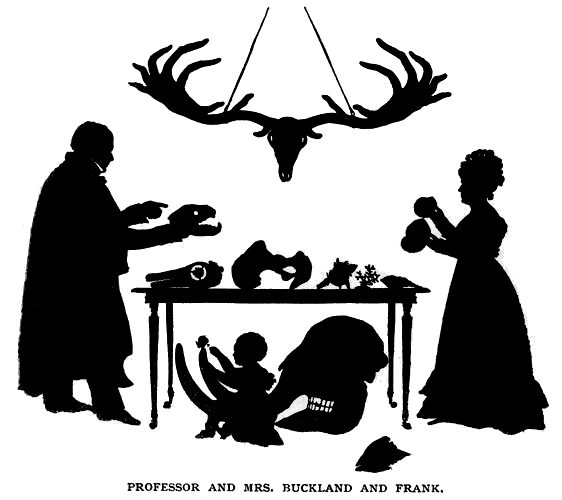|
Mummies
A mummy is a dead human or an animal whose soft tissues and Organ (biology), organs have been preserved by either intentional or accidental exposure to Chemical substance, chemicals, extreme cold, very low humidity, or lack of air, so that the recovered body does not Corpse decomposition, decay further if kept in cool and dry conditions. Some authorities restrict the use of the term to bodies deliberately embalming, embalmed with chemicals, but the use of the word to cover accidentally desiccation, desiccated bodies goes back to at least the early 17th century. Mummies of humans and animals have been found on every continent, both as a result of natural preservation through unusual conditions, and as cultural artifacts. Over one million Animal mummy, animal mummies have been found in Egypt, many of which are cats. Many of the Egyptian animal mummies are African sacred ibis, sacred ibis, and radiocarbon dating suggests the Egyptian ibis mummies that have been analyzed were from ... [...More Info...] [...Related Items...] OR: [Wikipedia] [Google] [Baidu] |
Animal Mummy
Animal mummification was common in ancient Egypt. Animals were an important part of Egyptian culture, not only in their role as food and pets, but also for religious reasons. Many different types of animals were mummified, typically for four main purposes: to allow people's beloved pets to go on to the afterlife, to provide food in the afterlife, to act as offerings to a particular ancient Egyptian deities, god, and because some were seen as physical manifestations of specific deities that the Egyptians worshipped. Bastet, the cat goddess, is an example of one such deity. In 1888, an Egyptian farmer digging in the sand near Speos Artemidos, Istabl Antar discovered a mass grave of felines, ancient cats that were mummified and buried in pits at great numbers. Besides Egypt, Pre-Columbian era, pre-Columbian bird mummies have been found in the Atacama Desert of Chile, including some next to the oasis town of Pica, Chile, Pica. These mummies were part of unknown rituals and a long-range ... [...More Info...] [...Related Items...] OR: [Wikipedia] [Google] [Baidu] |
Chinchorro Mummies
The Chinchorro mummies are mummified remains of individuals from the South American Chinchorro culture, found in what is now northern Chile. They are the oldest examples of artificially mummified human remains, having been buried up to two thousand years before the Egyptian mummies. The earliest mummy that has been found in Egypt dates from around 3000 BC, while the oldest purposefully artificially preserved Chinchorro mummy dates from around 5050 BC. The oldest naturally mummified corpse associated with the Chinchorro civilization was recovered from the Atacama Desert and is dated from around 7020 BC.Arriaza, Bernardo T. Beyond Death: The Chinchorro Mummies of Ancient Chile. Washington: Smithsonian Institution, 1995. Print. Shell midden and bone chemistry suggest that 90% of the people's diet was seafood. Many ancient cultures of fishermen existed, tucked away in the arid river valleys of the Andes, but the Chinchorro made themselves unique by their dedicated preservation of t ... [...More Info...] [...Related Items...] OR: [Wikipedia] [Google] [Baidu] |
African Sacred Ibis
The African sacred ibis (''Threskiornis aethiopicus'') is a species of ibis, a wading bird of the family Threskiornithidae. It is native to much of Africa, as well as small parts of Iraq, Iran and Kuwait. It is especially known for its role in Ancient Egyptian religion, where it was linked to the god Thoth. The species is currently extirpated from Egypt. Taxonomy It is very closely related to the black-headed ibis and the Australian white ibis, with which it forms a superspecies complex, so much so that the three species are considered conspecific by some ornithologists. In mixed flocks these ibises often hybridise. The Australian white ibis is often called the sacred ibis colloquially. Although known to the ancient civilisations of Greece, Rome and especially Africa, ibises were unfamiliar to western Europeans from the fall of Rome until the 19th century, and mentions of this bird in the ancient works of these civilisations were supposed to describe some type of curlew ... [...More Info...] [...Related Items...] OR: [Wikipedia] [Google] [Baidu] |
Mummia
Mummia, mumia, or originally mummy referred to several different preparations in the history of medicine, from "mineral pitch" to "powdered human mummies". It originated from Arabic ''mūmiyā'' "a type of resinous bitumen found in Western Asia and used curatively" in traditional Islamic medicine, which was translated as ''pissasphaltus'' (from "pitch" and "asphalt") in ancient Greek medicine. In medieval European medicine, ''mūmiyā'' "bitumen" was transliterated into Latin as ''mumia'' meaning both "a bituminous medicine from Persia" and "mummy". Merchants in apothecaries dispensed expensive mummia bitumen, which was thought to be an effective cure-all for many ailments. It was also used as an aphrodisiac. Beginning around the 12th century when supplies of imported natural bitumen ran short, mummia was misinterpreted as "mummy", and the word's meaning expanded to "a black resinous exudate scraped out from embalmed Egyptian mummies". This began a period of lucrative trade ... [...More Info...] [...Related Items...] OR: [Wikipedia] [Google] [Baidu] |
Spirit Cave Mummy
The Spirit Cave mummy is the oldest human mummy found in North America. It was discovered in 1940 in Spirit Cave, east of Fallon, Nevada, United States, by the husband-and-wife archaeological team of Sydney and Georgia Wheeler. Analysis of the remains showed similarities to North and South American indigenous peoples and in 2016, the remains were repatriated to the Fallon Paiute-Shoshone Tribe of Nevada. The Spirit Cave mummy was one of the first to be dated using accelerated mass spectrometer radiocarbon dating. In turn, its discovery and analysis gave much insight and motivation of further research into the chronology of the western great basin. Discovery The Wheelers, working for the Nevada State Parks Commission, were surveying possible archaeological sites to prevent their loss due to guano mining. Upon entering Spirit Cave, they discovered the remains of two people wrapped in tule matting. One set of remains, buried deeper than the other, had been partially mummified (t ... [...More Info...] [...Related Items...] OR: [Wikipedia] [Google] [Baidu] |
Ancient Egypt
Ancient Egypt () was a cradle of civilization concentrated along the lower reaches of the Nile River in Northeast Africa. It emerged from prehistoric Egypt around 3150BC (according to conventional Egyptian chronology), when Upper and Lower Egypt were amalgamated by Menes, who is believed by the majority of List of Egyptologists, Egyptologists to have been the same person as Narmer. The history of ancient Egypt unfolded as a series of stable kingdoms interspersed by the "Periodization of ancient Egypt, Intermediate Periods" of relative instability. These stable kingdoms existed in one of three periods: the Old Kingdom of Egypt, Old Kingdom of the Early Bronze Age; the Middle Kingdom of Egypt, Middle Kingdom of the Middle Bronze Age; or the New Kingdom of Egypt, New Kingdom of the Late Bronze Age. The pinnacle of ancient Egyptian power was achieved during the New Kingdom, which extended its rule to much of Nubia and a considerable portion of the Levant. After this period, Egypt ... [...More Info...] [...Related Items...] OR: [Wikipedia] [Google] [Baidu] |
Embalming
Embalming is the art and science of preserving human remains by treating them with embalming chemicals in modern times to forestall decomposition. This is usually done to make the deceased suitable for viewing as part of the funeral ceremony or keep them preserved for medical purposes in an anatomical laboratory. The three goals of embalming are disinfection, sanitization, presentation, and preservation, with restoration being an important additional factor in some instances. Performed successfully, embalming can help preserve the body for many years. Embalming has a long, cross-cultural history, with many cultures giving the embalming processes religious meaning. Animal remains can also be embalmed by similar methods, though embalming is distinct from taxidermy. Embalming preserves the body while keeping it intact, whereas taxidermy is the recreation of an animal's form often using only the creature's skin, fur or feathers mounted on an anatomical form. It is not required for ... [...More Info...] [...Related Items...] OR: [Wikipedia] [Google] [Baidu] |
Oxford English Dictionary
The ''Oxford English Dictionary'' (''OED'') is the principal historical dictionary of the English language, published by Oxford University Press (OUP), a University of Oxford publishing house. The dictionary, which published its first edition in 1884, traces the historical development of the English language, providing a comprehensive resource to scholars and academic researchers, and provides ongoing descriptions of English language usage in its variations around the world. In 1857, work first began on the dictionary, though the first edition was not published until 1884. It began to be published in unbound Serial (literature), fascicles as work continued on the project, under the name of ''A New English Dictionary on Historical Principles; Founded Mainly on the Materials Collected by The Philological Society''. In 1895, the title ''The Oxford English Dictionary'' was first used unofficially on the covers of the series, and in 1928 the full dictionary was republished in 10 b ... [...More Info...] [...Related Items...] OR: [Wikipedia] [Google] [Baidu] |
Cyclopædia, Or An Universal Dictionary Of Arts And Sciences
''Cyclopædia: or, an Universal Dictionary of Arts and Sciences'' is a British encyclopedia prepared by Ephraim Chambers and first published in 1728. Six more editions appeared between 1728 and 1751, and there was a ''Supplement'' in 1753. The ''Cyclopædia'' was one of the first general encyclopedias produced in English. Noteworthy features The title page of the first edition summarizes the author’s aims: The first edition included numerous cross-references meant to connect articles scattered by the use of alphabetical order, a dedication to the king, George II of Great Britain, George II, and a philosophical preface at the beginning of Volume 1. Among other things, the preface gives an analysis of forty-seven divisions of knowledge, with classed lists of the articles belonging to each, intended to serve as a table of contents and also as a directory indicating the order in which the articles should be read. Printing history A second edition appeared in 1738 in two volum ... [...More Info...] [...Related Items...] OR: [Wikipedia] [Google] [Baidu] |
Francis Trevelyan Buckland
Francis Trevelyan Buckland (17 December 1826 – 19 December 1880), better known as Frank Buckland, was an English surgeon, zoologist, popular author and natural historian. He was born in a noted family of naturalists. After a brief career in medicine he took an interest in fishes and other matters. He was one of the key members and founders of the acclimatisation society in Britain, an organization that supported the introduction of new plants and animals as food sources which was influenced by his interest in eating and tasting a range of exotic animal meats, a practice which he adopted from his William Buckland, father. Life and career Frank was the first son of Canon William Buckland, a noted geologist and palaeontologist, and Mary Buckland, Mary, a fossil collector, palaeontologist and illustrator. Frank was born and brought up in Oxford, where his father was a Canon of Christ Church, Oxford, Christ Church. His godfather was the sculptor Sir Francis Leggatt Chantrey, Fr ... [...More Info...] [...Related Items...] OR: [Wikipedia] [Google] [Baidu] |
Middle English
Middle English (abbreviated to ME) is a form of the English language that was spoken after the Norman Conquest of 1066, until the late 15th century. The English language underwent distinct variations and developments following the Old English period. Scholarly opinion varies, but the University of Valencia states the period when Middle English was spoken as being from 1150 to 1500. This stage of the development of the English language roughly coincided with the High Middle Ages, High and Late Middle Ages. Middle English saw significant changes to its vocabulary, grammar, pronunciation, and orthography. Writing conventions during the Middle English period varied widely. Examples of writing from this period that have survived show extensive regional variation. The more standardized Old English literary variety broke down and writing in English became fragmented and localized and was, for the most part, being improvised. By the end of the period (about 1470), and aided by the movabl ... [...More Info...] [...Related Items...] OR: [Wikipedia] [Google] [Baidu] |
Aleiodes
''Aleiodes'' (Greek "not", "smooth", "appearance") is a genus of the family Braconidae of parasitoid wasps described by Constantin Wesmael in 1838. They are also known as mummy-wasps. The female attacks caterpillars of various species, including many pests such as spongy moths and tent caterpillars, and then deposits eggs in the caterpillars. The eggs hatch and the wasp larva feeds on the caterpillar, leaving a hardened caterpillar skin, or mummy. The wasp pupates within the mummy and eventually the adult breaks out, leaving a small hole in the husk of the caterpillar. There are thousands of species, including: *'' Aleiodes cacuangoi'' named after Dolores Cacuango *'' Aleiodes colberti'' named after Stephen Colbert *''Aleiodes coxalis'' *'' Aleiodes dangerlingi'' named after Dan Gerling *'' Aleiodes elleni'' named after Ellen DeGeneres *'' Aleiodes falloni'' named after Jimmy Fallon *'' Aleiodes frosti'' named after Robert Frost (American poet) *''Aleiodes gaga'' named ... [...More Info...] [...Related Items...] OR: [Wikipedia] [Google] [Baidu] |








